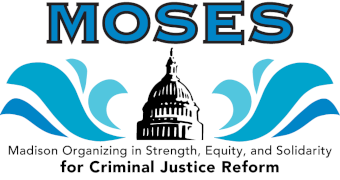
Glossary of Terms (collected in 2020)
Glossary of Commonly used terms defined
Different methods of policing in the US:
| Broken Windows policing:
Pioneered in the early 1980s and adopted broadly during the urban crime wave of the ‘80s and early ‘90s, the broken windows theory held that the aggressive enforcement of minor infractions would instill a sense of order in crime-ravaged communities and discourage more serious offenses. Data analysis and successful lawsuits have shown that broken windows policing has been disproportionately applied to Black and Latino communities. In New York City, “turnstile jumping” is a textbook example of a broken windows offense. A 2018 analysis by The Marshall Project and Gothamist shows how “poor Black neighborhoods have disproportionately high rates of turnstile arrests per swipe, even when poverty and crime rates are accounted for. Read more: A Millennial’s Guide to Broken Windows
Predictive Policing: Real-time crime monitoring and prediction software known as CompStat was introduced in New York City in 1994 and was gradually adopted across the country. Predictive policing software uses data to plot points on a map to identify “hot spots” for criminal activity, so that departments can assign officers accordingly. Some of these programs also factor in other conditions like the weather, proximity to bars and nearby public transportation. Critics say predictive policing algorithms are at risk of reinforcing existing racial biases in the system because they are over-reliant on information such as arrest records from overpoliced communities. They also require human beings with their own biases to interpret the data. WATCH
Community Policing: This idea dates back to the 1980s as an antidote to the dysfunctional, oppositional relationship that the police often share with the neighborhoods they serve. The concept invokes the classic “beat cop” who routinely patrols the same area, is known by residents, and is not seen as a member of an occupying force. Community policing supporters advocate for measures like civilian review boards to help oversee the police, racial bias training and body-worn cameras to promote accountability. |
What is meant by these terms?
IDEA
Defunding calls for a substantial reduction of police department budgets, using those funds instead for social services and anti-poverty measures. There’s a wide range of opinion as to how much and how quickly departments should be defunded, and how to restructure civic life to make this possible.
RECOMMENDATIONS
“Regardless of your view on police power—whether you want to get rid of the police or simply to make them less violent—here’s an immediate demand we can all make: Cut the number of police in half and cut their budget in half,” writes abolitionist Miriame Kaba. “Fewer police officers equals fewer opportunities for them to brutalize and kill people.”
OPPOSITION
People who object to defunding point to studies that have found that more police officers lead to fewer use-of-force complaints and lower overall rates of crime.
IDEA
Abolitionists believe that procedural reforms cannot fix policing because it is an inherently racist tool of social control. In “The End of Policing,” Brooklyn College professor Alex S. Vitale argues that “any real agenda for police reform must replace police with empowered communities working to solve their own problems.” Defunding is a step on the way to abolition, but the central idea here is much larger and more transformative.
RECOMMENDATIONS
Abolitionists envision a society in which the police are unnecessary because basic human needs like a living wage, safe affordable housing and access to mental healthcare are universal.
OPPOSITION
While abolitionists envision replacing the police with a strong social safety net, opponents fear a rise in crime and see the idea as a threat to public safety.
IDEA
The difference between “defunding” and “reimagining” is largely semantic. Critics of “defunding” say the language vilifies police officers and conjures images of unprotected communities overrun by crime. Law enforcement leaders often use “reimagining” to convey a redeployment of safety resources rather than a decrease in them.“This is a reimagining opportunity for American policing,” said former New York and Los Angeles police commissioner Bill Bratton at a June 2020 virtual town hall organized by the Police Executive Research Forum. “By taking some of those responsibilities away from us that have been dumped on us—all the concerns, all the issues around drugs—let society figure out if they can do it without the police and can they do it better without the police.”
RECOMMENDATIONS
Like defunding, reimagining centers around the idea that police are utilized for too many functions in society—like responding to mental health calls or traffic accidents—that could be better addressed by different civil servants. In some cases this could mean adding responders trained to help people through mental health, housing and addiction crises to an already-existing emergency response system. In Eugene, Oregon, nurses, EMTs, and social workers handle 20 percent of the city’s 911 calls, and Olympia, Washington, recently adopted a similar program.
OPPOSITION
Activists argue that “reimagining” policing doesn’t address what they consider the fatal flaws of the institution: its racist roots and persistent role in perpetuating race and class inequities. They argue that some of the changes are already in place in select departments but are too incremental to eradicate the deep-seated culture problems that lead to brutality and abuse of power. They also say reforms only seek to make a structurally racist system slightly less violent.
Articles
- Santa Cruz is first U.S. city to ban predictive policing – Los Angeles Times
-
Police guide that calls BLM a terrorist group draws outrage – The Washington Post
- A Watchdog Accused Officers of Serious Misconduct. Few Were Punished. – The New York Times
- Support For Defunding The Police Department Is Growing. Here’s Why It’s Not A Silver Bullet.
- The End of Policing Left Me Convinced We Still Need Policing
- Dismantling the Minneapolis Police Department
- When Armed Vigilantes Are Summoned With a Few Keystrokes – The New York Times
- “Defund the Police” Is a Self-Destructive Slogan–Especially if you want to reform law enforcement.
